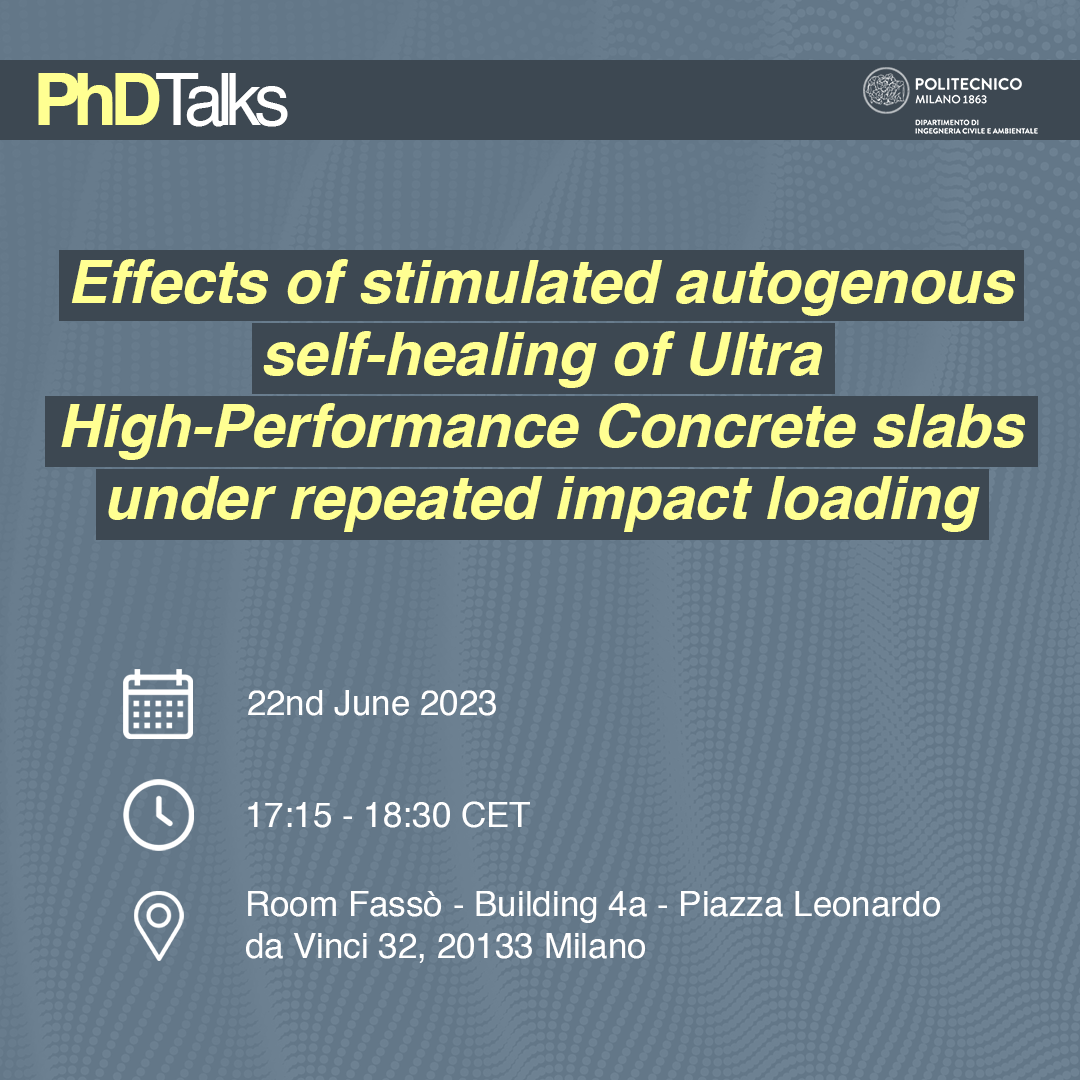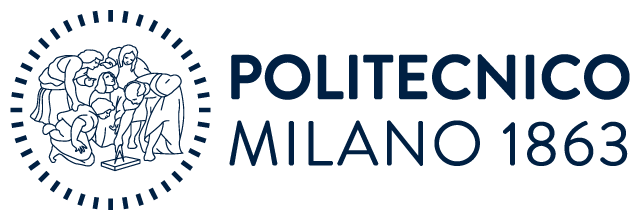
- Questo evento è passato.
PhDTalks | Effects of stimulated autogenous self-healing of Ultra High-Performance Concrete slabs under repeated impact loading
22 Giugno 2023 @ 17:15 - 18:30

Il prossimo appuntamento con la serie di incontri PhDTalks si terrà Giovedì 22 Giugno nell’aula Fassò, dalle 17:15 alle 18:30 CET.
PhDTalks è una serie di seminari e discussioni tra dottorandi. Gli eventi hanno lo scopo di fornire un luogo dove creare un network tra dottorandi ed entrare in contatto con i molti progetti sviluppati nel nostro dipartimento.
Lo speaker Niranjan Prabhu Kannikachalam condurrà un seminario dal titolo “Effects of stimulated autogenous self-healing of Ultra High-Performance Concrete slabs under repeated impact loading”.
Sarà possibile seguire la conferenza anche online al seguente link.
Al termine dell’evento sarà disponibile un piccolo rinfresco finanziato dal dipartimento.
Abstract:
This paper reports on an experimental investigation on the self-healing capabilities of Ultra-High-Performance Concrete (UHPC) subjected to a drop-weight test. The impactor weight was 10 kg, dropped from the height of 1 m on the center of the specimen with dimensions 29 x 29 x 4 cm3 (± 1 cm), with fixed corners and a continuous bottom support near the edges. Two types of self-healing were studied: stimulated autogenous self-healing with crystalline admixtures and autonomous self-healing with macro-capsules containing polyurethane. To pre-crack the specimens, a repeated impact was performed on the same specimen. The different healing conditions for autogenous self-healing were submersion, wet/dry cycling in water, or in saline solution (12 hours wet/12 hours dry), and exposure to an environment with 95±5% RH. The self-healing evaluation was made using natural frequency analysis, microscopic crack closure monitoring, and laser measurements of the ductility. The test moments were at impact testing, and after 1 month, 2 months, and 4 months. The rebound height of the impactor and the crack formation during a drop weight test were analyzed using a high-speed camera and Digital Image Correlation. At the end of the healing period, all the specimens were tested to failure and the improvement of impact resistance due to self-healing was evaluated. Based on the natural frequency analysis and surface crack closure, the healing efficiency for autogenous self-healing increased for samples stored at 95±5% RH, in wet/dry cycling, and submerged. In comparison, autonomous self-healing specimens were tested to failure on the same day, an hour after pre-cracking.
Speaker’s bio:
Niranjan Prabhu, an enthusiastic and committed Ph.D. student, is dedicated to exploring the characterization of self-healing concrete performance in extreme loading scenarios. He is currently enrolled in the joint doctoral program at Politecnico di Milano (36th cycle) and Ghent University, where he is also a valued researcher in the Self-healing concrete group of the Smartincs network. Niranjan’s primary objective is to contribute significantly to the field through his research endeavors. In addition to his research pursuits, Niranjan actively participates in scholarly discussions, attends conferences, and collaborates closely with fellow researchers, fostering a dynamic academic community.
